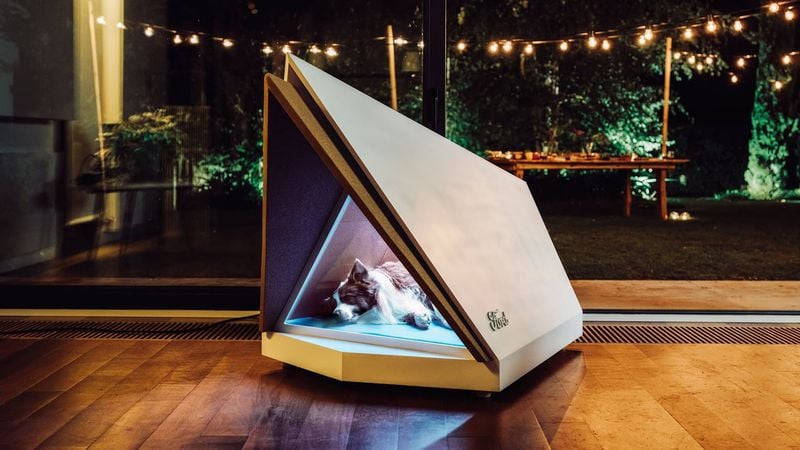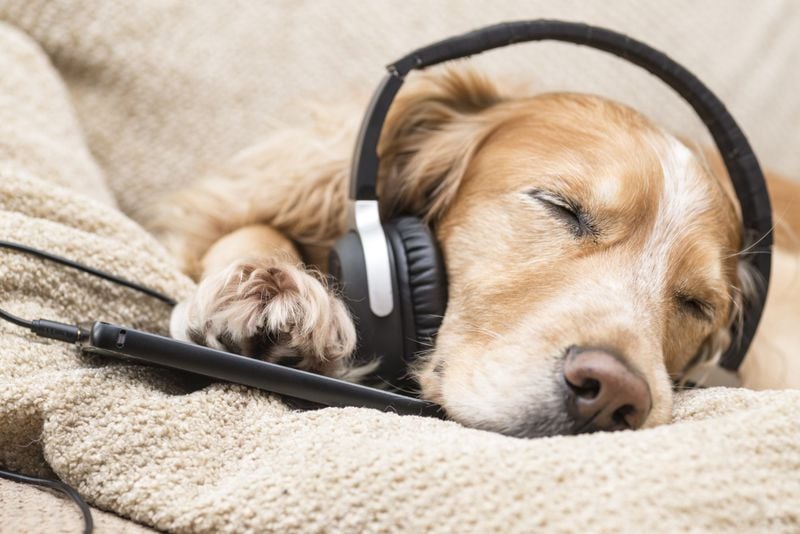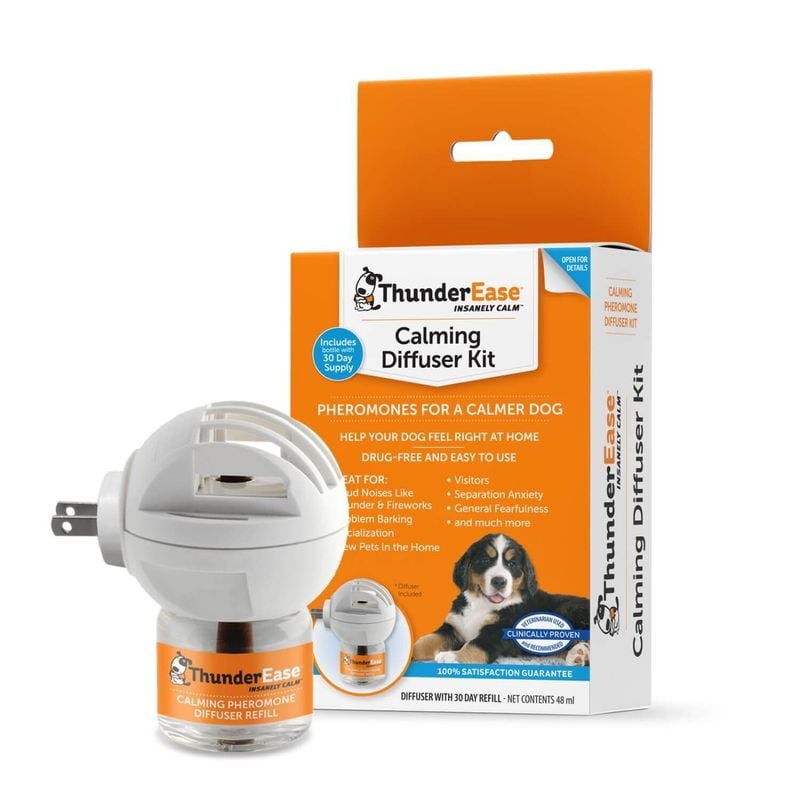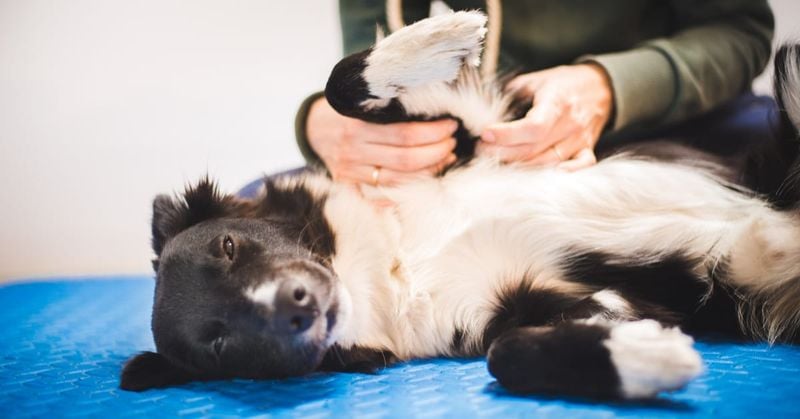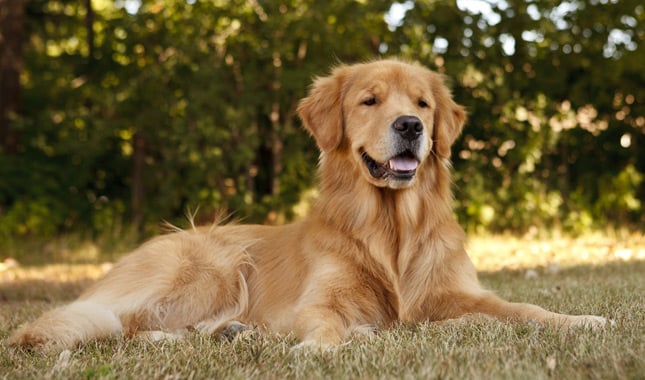Experts Reveal 14 Genius Ways to Calm Your Dog During a Storm
Thunder and lightning can transform even the bravest pup into a trembling, anxious mess. Many dogs experience intense fear during storms, hiding under furniture, pacing, or even destroying property in their panic.
The good news is that pet experts have discovered effective techniques to help your furry friend weather the storm. These proven methods can make a world of difference for your storm-phobic pooch.
1. Create a Safe Haven
Dogs instinctively seek shelter when frightened. Designate a cozy corner in your home where your pup can retreat during storms. Line it with their favorite blankets and toys.
The ideal safe space should be in an interior room with minimal windows – perhaps a bathroom, closet, or basement area where storm sounds are muffled. Some dogs prefer enclosed spaces like crates covered with blankets.
Make this special spot accessible year-round so your dog associates it with comfort, not just storms. The familiarity will help them feel protected when thunder begins to rumble overhead.
2. Try a ThunderShirt or Anxiety Wrap
Pressure wraps work like magic for many anxious dogs. These snug-fitting garments apply gentle, constant pressure around your dog’s torso, similar to swaddling a baby. The sensation creates a calming effect that significantly reduces anxiety symptoms.
Veterinary behaviorists often recommend commercial options like ThunderShirts, but DIY alternatives using ace bandages or tight t-shirts can work in a pinch. The science behind these wraps relates to the calming effect of touch pressure on the nervous system.
Put the wrap on before the storm starts for maximum effectiveness. Many owners report their previously panicking pooches lying down peacefully within minutes of wearing one.
3. Play White Noise or Calming Music
Sound masking provides remarkable relief for storm-sensitive pups. Classical music, specially composed pet relaxation tracks, or simple white noise can help drown out the frightening sounds of thunder and rain. Studies show that dogs respond particularly well to classical pieces with slow tempos.
Position a radio, television, or white noise machine near your dog’s safe space. The consistent background noise creates an audio buffer between your pet and the unpredictable storm sounds.
Many streaming services now offer playlists specifically designed for anxious pets. Start the calming sounds before the storm hits, as prevention works better than intervention once fear takes hold.
4. Close Curtains and Blinds
Lightning flashes can trigger intense fear responses in storm-phobic dogs. Drawing curtains and lowering blinds eliminates these visual stimuli that might escalate your dog’s anxiety. Thick, room-darkening curtains work particularly well for this purpose.
Creating a visually calm environment helps your dog focus on other calming elements you’ve put in place rather than being startled by sudden flashes. Some pet owners find that keeping interior lights on at a consistent level further reduces the contrast of lightning.
Remember to close blinds before the storm arrives if possible. This proactive approach prevents your dog from making the connection between the visual changes in your home and the approaching storm.
5. Use Calming Pheromones
Synthetic pheromones mimic the natural comforting chemicals mother dogs release to soothe their puppies. Products like Adaptil come in diffuser, spray, or collar forms and emit these calming signals undetectable to humans but powerful for dogs.
Plug-in diffusers work best when placed in your dog’s safe space at least 30 minutes before storm anxiety begins. The pheromones create an invisible bubble of reassurance that helps reduce stress behaviors like panting, pacing, and whining.
Many veterinarians recommend using pheromones alongside other calming strategies for maximum effect. While not a miracle cure, these products provide significant relief for many storm-sensitive canines without medication.
6. Provide Engaging Distractions
Redirecting your dog’s attention can work wonders during storms. Puzzle toys filled with high-value treats engage their problem-solving instincts and create positive associations with storm time. Frozen Kong toys stuffed with peanut butter provide long-lasting distraction.
Interactive games like hide-and-seek or gentle training sessions give your dog something to focus on besides the scary weather. The key is finding something your dog loves enough to overcome their fear temporarily.
Some clever owners save special toys exclusively for stormy days, making them novel and exciting. This strategy works particularly well for food-motivated dogs who might otherwise refuse treats during stressful events.
7. Maintain Your Own Calm Demeanor
Dogs are remarkably attuned to human emotions and often mirror our reactions. When you remain composed during storms, you signal to your pet that there’s no reason for alarm. Your steady presence becomes an emotional anchor for your anxious companion.
Avoid making excessive fuss over your dog when they show fear, as this can inadvertently reinforce anxious behavior. Instead, act normally – read a book, watch TV, or go about routine activities with a relaxed attitude.
Speaking in upbeat tones rather than using a sympathetic voice helps tremendously. Your confident energy communicates safety more effectively than words ever could, giving your dog permission to relax.
8. Apply TTouch or Gentle Massage
Specific touch techniques can activate your dog’s parasympathetic nervous system, countering the fight-or-flight response triggered by storms. The Tellington TTouch method involves gentle circular movements with your fingertips across your dog’s body, especially around ears, chest, and shoulders.
Regular massage along your dog’s back and neck helps release tension that builds during anxiety episodes. Long, slow strokes from head to tail have a particularly calming effect on most dogs.
Many canines respond well to gentle ear slides, where you slowly run your fingers from the base of the ear to the tip. This simple technique stimulates nerve endings connected to multiple body systems, promoting relaxation during stressful weather events.
9. Practice Desensitization Training
Long-term relief requires gradually acclimating your dog to storm sounds through controlled exposure. Begin by playing recorded thunder at very low volumes during positive activities like mealtime or play sessions. Reward calm behavior generously with treats and praise.
Slowly increase the volume over weeks or months as your dog shows comfort at each level. This methodical approach teaches your pet that storm sounds predict good things rather than danger.
Professional trainers recommend consistent, short sessions rather than occasional long ones. While this technique requires patience, it offers lasting results for many dogs who previously panicked during storms, potentially eliminating the need for other interventions.
10. Explore Natural Calming Remedies
Several natural supplements have shown promise for storm-anxious dogs when used with veterinary guidance. L-theanine, an amino acid found in green tea, promotes relaxation without sedation. Melatonin, the sleep-regulating hormone, can help ease anxiety at appropriate dosages.
Flower essences like Rescue Remedy have devoted followers who report noticeable improvements in their pets’ stress levels. These gentle formulations are typically added to water or placed directly on the gums.
CBD oil derived from hemp has gained popularity for anxiety management in pets. Always consult your veterinarian before trying any supplement, as proper dosing is essential for safety and effectiveness, especially with newer options like CBD.
11. Consult Your Veterinarian
For dogs with severe storm phobia, professional help may be necessary. Veterinarians can assess whether your dog’s anxiety warrants prescription medication for occasional or regular use during storm season. Modern veterinary anti-anxiety medications are much safer and more effective than older options.
Your vet might recommend situational medications like trazodone that can be given before storms without daily administration. For dogs with persistent severe anxiety, daily medications like fluoxetine might be appropriate.
A thorough medical exam ensures your dog’s fear isn’t exacerbated by medical issues like pain or sensory problems. Many pet owners report life-changing improvements after finding the right medical support for their storm-phobic companions.
12. Never Punish Fearful Behavior
Scolding or punishing a frightened dog only intensifies their fear and damages your bond. Anxiety behaviors like whining, panting, or hiding are not acts of disobedience but genuine distress responses your dog cannot control.
Even well-intentioned corrections can make your dog associate storms not only with scary noises but also with your disapproval. This double negative reinforcement worsens anxiety in future storms.
Instead of punishment, offer gentle redirection to more appropriate coping behaviors. Patience is crucial – remember your dog isn’t choosing to be afraid. Their storm phobia is as real and involuntary as any human phobia, deserving compassion rather than correction.
13. Reward Calm Behavior Generously
Positive reinforcement works wonders for encouraging relaxed responses during storms. When you catch moments of calmness – even brief ones – immediately reward your dog with special treats, gentle praise, or favorite toys.
Timing matters tremendously. Rewards must come during calm moments, not when your dog is actively showing anxiety. This precision helps your pet connect relaxation with rewards rather than reinforcing anxious behaviors.
Many trainers recommend preparing a special “storm treats” jar with high-value rewards used exclusively during weather events. These premium goodies create powerful positive associations that gradually chip away at storm fears, teaching your dog that thunderstorms can actually predict wonderful things.
14. Stay Close By When Possible
Your physical presence provides immense comfort to a storm-phobic dog. Simply being in the same room can significantly reduce their anxiety levels. You don’t need to constantly pet or talk to them – just being visible helps tremendously.
Reading a book nearby or working on your laptop while they rest in their safe space strikes the perfect balance. This approach offers reassurance without reinforcing clingy behavior or making the storm seem like a big deal.
If you must leave during storms, placing an unwashed item of your clothing near your dog’s resting area provides comforting scent cues. Your familiar smell reminds them of safety and security even when you can’t be physically present during frightening weather.

